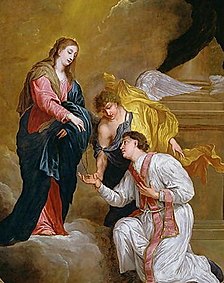Valentine’s Day History


Valentine’s Day, celebrated on February 14, sees exchanges of candies, flowers, and tokens of affection among loved ones worldwide. The traditions of this day are rooted in the enigmatic figure of St. Valentine and a history that intertwines ancient Roman rituals like Lupercalia, welcoming spring, with the card-giving customs of Victorian England. Discovering the meaning and evolution of Valentine’s Day offers insight into a celebration that bridges ancient practices with modern-day expressions of love and appreciation.
St. Valentine legend History
The origins of Valentine’s Day are veiled in a tapestry of mystery and historical blendings. February, renowned as a month of romance since antiquity, intertwines Christian and ancient Roman traditions to birth the celebration we know today. The holiday’s patron saint, St. Valentine, remains an elusive figure, with the Catholic Church acknowledging at least three saints bearing the name Valentine or Valentinus, all martyred for their beliefs.
One narrative portrays Valentine as a courageous priest in third-century Rome. Emperor Claudius II, convinced that unmarried men were better suited for the military, banned young men from marrying. Defying this decree, Valentine clandestinely conducted marriages for young lovers, prompting Claudius to order his execution. Another account suggests St. Valentine of Terni, a bishop also executed by Claudius II near Rome, as the holiday’s namesake.
Legends intertwine, hinting at Valentine’s potential martyrdom for aiding Christians fleeing brutal Roman prisons where they faced torture. Among these tales, one speaks of a confined Valentine who, enamored with a young girl—possibly his jailer’s daughter—reportedly sent the inaugural “valentine” greeting. Allegedly, before his death, he scribed a letter signing off as “From your Valentine,” a phrase enduring in modern traditions. While factual details about Valentine remain obscured, these narratives paint him as a sympathetic, heroic, and notably romantic figure.
Amidst the Middle Ages, Valentine’s esteemed reputation blossomed, earning him a place among the most beloved saints in England and France, owing to these captivating tales of valor and love.
Origins of Valentine’s Day and why this festival celebrate in February
While some suggest that Valentine’s Day aligns with the commemoration of Valentine’s death or burial circa A.D. 270, an alternative belief proposes a Christian adaptation of the pagan festival Lupercalia positioned in the middle of February. Lupercalia, observed on the ides of February (February 15), honored Faunus, the Roman god of agriculture, and the legendary founders of Rome, Romulus and Remus.
The festivities commenced with the Luperci, a group of Roman priests, convening at a sacred cave linked to Romulus and Remus, the infants nurtured by a she-wolf or lupa. These priests would conduct sacrifices of a goat for fertility and a dog for purification. The goat’s hide was then fashioned into strips, dipped in sacrificial blood, and tenderly used to touch women and fields. Rather than fear, Roman women welcomed this touch, believing it enhanced their fertility for the coming year. Legend holds that later in the day, the city’s young women would place their names in a large urn, and bachelors would draw names, becoming paired for the year, often culminating in marriage.
What is meaning of Valentine’s Day?
Lupercalia persisted despite the ascent of Christianity but faced prohibition in the late 5th century under Pope Gelasius, deeming it incompatible with Christian beliefs. This decree established February 14 as St. Valentine’s Day. Yet, its association with love evolved gradually. During the Middle Ages, a prevailing belief in France and England held that February 14 marked the start of birds’ mating season, further embedding the day with romantic connotations. Geoffrey Chaucer, in his 1375 poem “Parliament of Foules,” immortalized Valentine’s Day as a moment for love, penning, “For this was sent on Seynt Valentyne’s day / Whan every foul cometh ther to choose his mate.”
Valentine greetings gained popularity in the Middle Ages, but written Valentines emerged post-1400. The oldest surviving valentine, a poem from 1415 by Charles, Duke of Orleans, addressed to his wife while imprisoned in the Tower of London after the Battle of Agincourt, resides in the British Library’s manuscript collection. It’s believed that King Henry V later commissioned a writer named John Lydgate to craft a valentine note for Catherine of Valois.
Knows about Cupid
Cupid, a recurrent figure on Valentine’s Day cards, traces his origins to the Roman God of love, drawing roots from Greek mythology as the god Eros. Variations abound regarding his parentage; some narratives link him to Nyx and Erebus, others to Aphrodite and Ares, while yet more suggest Iris and Zephyrus, or even Aphrodite and Zeus, creating a complex web of potential genealogies.
As per the Greek Archaic poets, Eros embodied a handsome immortal figure who toyed with the emotions of both gods and mortals. Employing golden arrows to inspire love and leaden ones to sow aversion, he manipulated affections in the realms of divinity and humanity alike. However, it was during the Hellenistic period that he transitioned into the mischievous, cherubic child figure commonly depicted on modern Valentine’s Day cards.
Greetings and Gifts of Valentine’s Day
Valentine’s Day transcends borders, celebrated not only in the United States but also in Canada, Mexico, the United Kingdom, France, and Australia. Its popularity in Great Britain blossomed around the 17th century.
By the mid-18th century, tokens of affection and handwritten notes became customary exchanges among friends and lovers, spanning all social classes. Advancements in printing technology by 1900 led to the prevalence of printed cards, supplanting handwritten letters. These ready-made cards provided a medium for expressing emotions at a time when direct emotional expression was discouraged. Additionally, reduced postage rates further fueled the trend of sending Valentine’s Day greetings.
In America, the tradition likely began in the early 1700s with handmade valentines. However, in the 1840s, Esther A. Howland pioneered the commercialization of valentines by introducing the first mass-produced ones in the country. Revered as the “Mother of the Valentine,” Howland crafted elaborate creations adorned with real lace, ribbons, and colorful pictures known as “scrap.” Today, according to Hallmark, an estimated 145 million Valentine’s Day cards are exchanged annually, solidifying Valentine’s Day as the second largest card-sending holiday, second only to Christmas.







